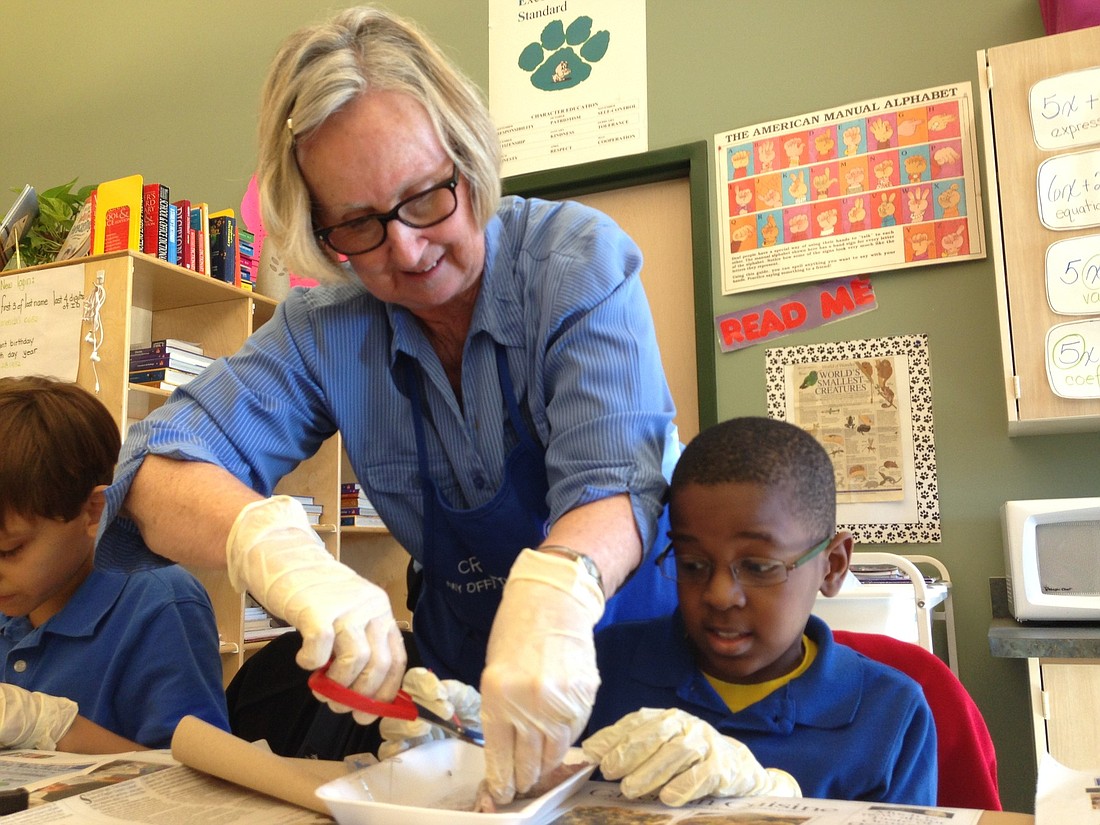- April 19, 2024
-
-
Loading

Loading

“I think I have brain matter in my hands,” says one student, Kenny Logan. He’s a fifth-grader in Karen Driscoll’s gifted class at Bunnell Elementary School, and he’s participating Feb. 5 in a particularly hands-on activity: squid dissection.
Two-dozen students sit in front of their individual squids, which are about the size of a washrag, give or take a few tentacles.
Driscoll moves from one desk to the next, wearing a blue apron and, like most of the rest of the students, rubber gloves. They cut into the squid with scissors, and then try to extract the “pen,” which resembles a feather, but it’s transparent, like plastic. Squids are invertebrates, so this is the closest thing to a bone the students will find.
Since Christmas, the class has been working through a PBS series that Driscoll has preserved on VHS tapes from a previous science class she taught in Boston. The videos teach kids about the oceans, and this dissection activity is a way to make marine animals come to life, so to speak. Driscoll also secured a grant from Marineland and brought her class there in the fall to learn about dolphins. At beginning of February, the class visited the Orlando Science Center.
Driscoll says the half-penny tax that funds school technology is being taken advantage of: The class watches science videos on the big screen thanks to a subscription to Discovery Education, funded by the tax. “The tax isn’t just for iPads,” she says.
The dissection exposes students to certain conflicts they would never experience in the same way if they were only reading a book. Some students, including Matthew Brunell, Patrick White and Margaret D’Elia, have mixed feelings about handling an animal that was killed just so they could dissect it. Another student, William Vierengel, jokes his way through the moment, saying to his squid, “All your pain is relieved, my friend.”
Driscoll says it’s an important lesson: “You have to respect the animal that you are dissecting.”
Margaret thinks about it some more and later asks, “Can I keep the tentacles?” The answer is no.
Another student tells his friend, keeping with the marine theme, “I won a staring contest with a fish. And fish don't blink.”
Driscoll teaches the students that sailors used to make art on whale teeth. They would paint a tooth black with the ink found in squids’ sacs, and then etch into it to make a souvenir to bring back home.
The conclusion of the activity is for the students to find the M&M-sized ink sac of their own squids and write their names on an index card.
By now, Kenny has given up on his gloves and is making fingerprints on the card with his ink. Isabella Miller writes on her card, “R.I.P. Squidzy.”
And with that, the activity is over, and the entire room is disinfected. Next up: learning math by tracking the Iditarod in real time.
“We want to get the kids out of the books and let them learn, hands-on,” Driscoll says. “You really want to make science pop.”